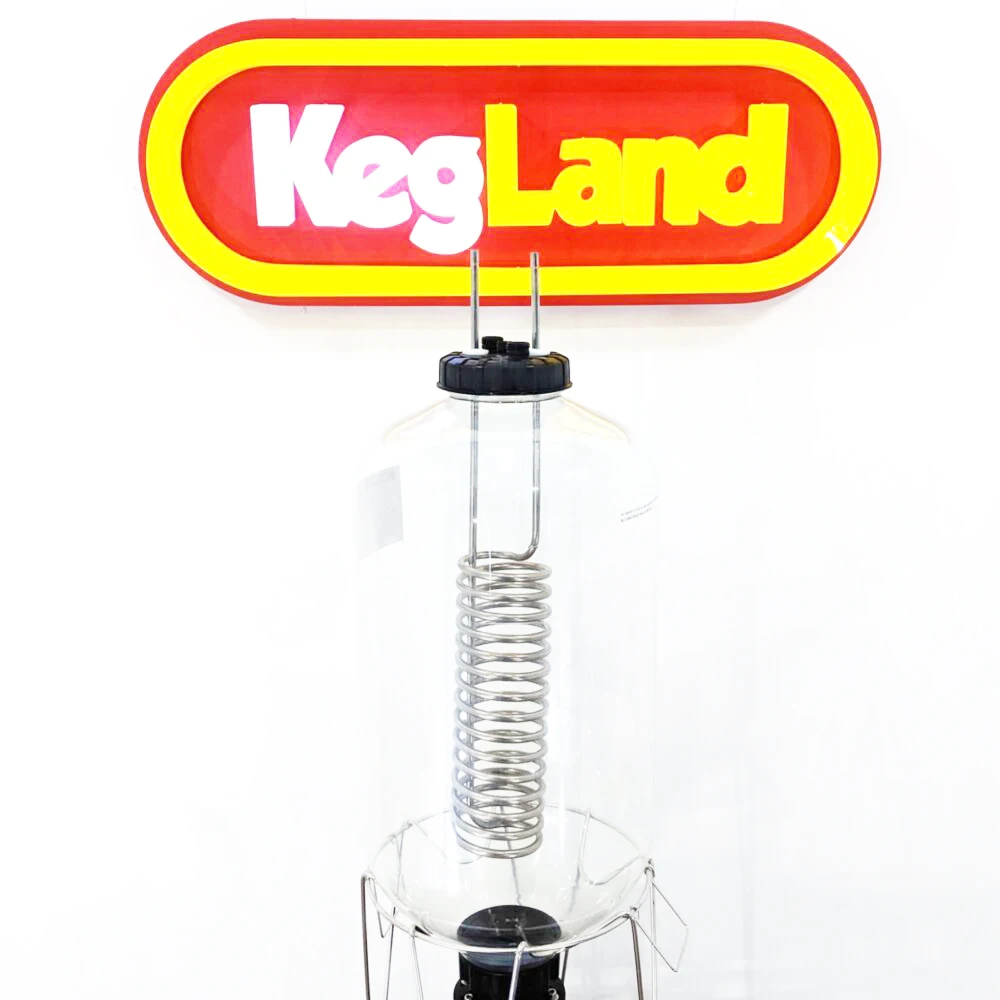It's been awhile since I was on the forum, but I am back and looking for any insight to come up with a solution for bulk pasteurization. Pappers has a good thread about pasteurization and how to do it on the stove top with bottles. I am including a quote from his post describing the reasonings behind someone wanting to pasteurize. This does not address bulk pasteurization. In this thread, I want to keep it about bulk pasteurization, not about using campden tablets, potassium metabisulfite, or potassium sorbate, or anything else I didn't list. I want to kill the yeast not subdue it.
Bulk Pasteurization. Some of us that keg and have the necessary equipment might want to stop fermentation at a desired sweetness, backsweeten, or possibly ensure the solution is sanitary. This might be considered "overhandling" but possible unpopular opinion, I think bottling beer an cider feels like overhandling - this is somewhere in between pure kegging and bottling.
Current ideas for bulk pasteurization include:
Cons to Method 1:
Looking for any other bulk pasteurization ideas, thoughts to tighten up the process, or more pros/cons.
Again I do not want to talk additives, chemicals, or just keeping the keg cold to subdue the yeast. This is about bulk pasteurization.
So, you've made your cider (I keep it simple with juice, ale yeast and pectic enzyme) and have it in the carboy. When fermentation slows down, I start taking gravity readings and tastings. When its at the right level of sweetness/dryness (for me, that's about 1.010- 1.014), rack to bottling bucket with priming solution and bottle. Let the bottles carbonate and condition until the carbonation level is right - for me, that is usually about 1 week but for others it could be sooner. Start opening a bottle every two days or so, until you find that carbonation is at the right level. Warning - if the carbonation level is too high, if you have gushing bottles for example, do not pasteurize, the pressure will be too much for your bottles. Ok, now, we're ready for the point of this thread - pasteurizing.
Why pasteurize? Because at this point, you have a bottle of sparkling cider, with some residual fruit sugar left and yeast that is still working. If you just leave it be, you will likely end up with shrapnel rather than delicious sparkling cider. By gently heating the bottles, you will finish-off our yeast friends - they've done their job, they've performed admirably, but its time to say goodbye. Rather then pasteurize, you could cold-crash, but I don't have the refrigerator space for that and also can't give bottles away to other people using that method. I've found that the sparkling cider is very popular with my friends (and swmbo) and pretty much need to keep a constant pipeline of it going. The good news is its remarkably simple to make and takes much less time than brewing.
Bulk Pasteurization. Some of us that keg and have the necessary equipment might want to stop fermentation at a desired sweetness, backsweeten, or possibly ensure the solution is sanitary. This might be considered "overhandling" but possible unpopular opinion, I think bottling beer an cider feels like overhandling - this is somewhere in between pure kegging and bottling.
Current ideas for bulk pasteurization include:
- Heat in Brew Kettle
- Transfer from fermenter to brew kettle
- Heat to 158, hold temperature for 1 minute
- Cool.
- Transfer to Keg
- Flood headspace with CO2 and put in kegerator/keezer for final carbonation.
- Heat in Keg
- Transfer to keg.
- Flood headspace with CO2 (CO2 is heavier than Oxygen so oxidation might be limited.
- Use sous vide.
- Reach 158F for 1 minute.
- Flood headspace with CO2 and put in kegerator/keezer for final carbonation.
- Heat entire Keg
- Transfer to keg.
- Flood headspace with CO2 (CO2 is heavier than Oxygen so oxidation might be limited.
- Spunding Valve might be a good idea here
- Heat Brew Kettle with xx gallons of water to 160F
- Put entire Keg in Brew Kettle
- Hold temperature for xx hours until cider temperature is 158F.
- Flood headspace with CO2 and put in kegerator/keezer for final carbonation.
Cons to Method 1:
- May heat unevenly and change the flavor of the cider
- May introduce oxygen post fermentation
- May damage keg seals, separate rubber feet/handles if older kegs or heat too hot. (this may be a non issue at 158F, thoughts?)
- May be worse than Method 2 as far as damage keg seals, separate rubber feet/handles if older kegs or heat too hot. (this may be a non issue)
Looking for any other bulk pasteurization ideas, thoughts to tighten up the process, or more pros/cons.
Again I do not want to talk additives, chemicals, or just keeping the keg cold to subdue the yeast. This is about bulk pasteurization.
Last edited:



